How I Learnt To Live With Chronic Back Pain
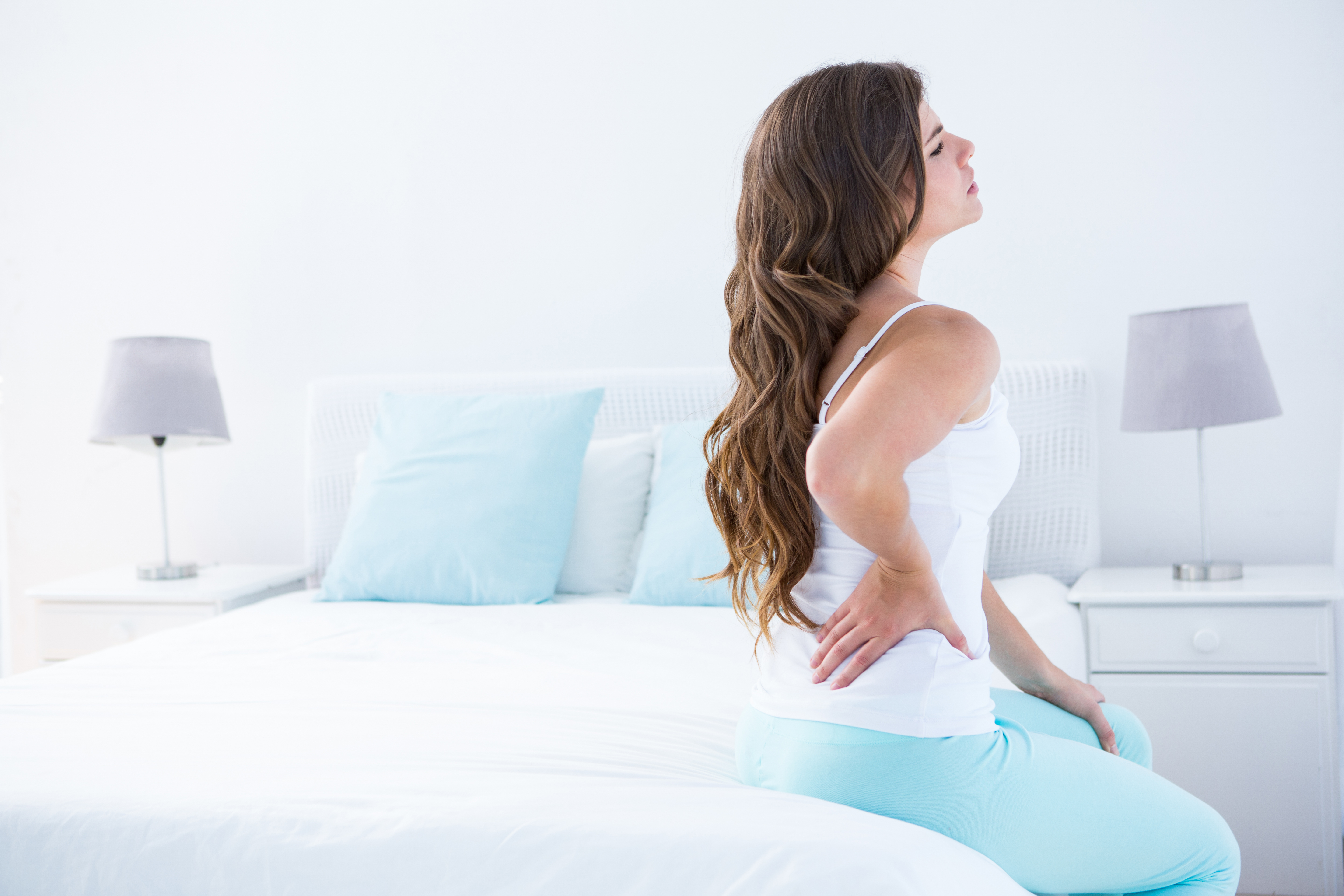
Here at Mangar Health, we’re passionate about finding solutions to enable independence for people of all ages.
We’ve been talking to Hayley about her chronic illness and how a young person feels when pain prevents her living life to the full…
Chronic illness and chronic pain are expressions that I had seen used frequently online, but I didn’t really think that they applied to me. I’m 27 years old, I’m relatively fit and healthy, I don’t really get any sickness bugs or viruses and I only get a couple of colds a year. Despite all of the above, I have now been living with chronic pain for over 7 years.
I was 20 years old and in my first year of university when my back started hurting. One morning I woke up and was in complete agony, it hurt to move, it hurt to sit and it hurt to walk – it was completely debilitating. I booked a doctor’s appointment after putting up with the pain for a couple of days as it was showing no sign of getting any better.

I explained to the first doctor that I had fallen over two years previously and landed on my bum and as a result had had a sore back for a few days. I hadn’t experienced pain for years, but as it was in the same place I was a little concerned. The doctor had a look at my back and told me that I have scoliosis and that one of my vertebrae was pressing against the sciatic nerve which is what was causing the pain.
I was given a prescription for Diclofenac and Co-Codamol (8/500mg) in hopes it would help ease the pain. When the pain didn’t get any better, I returned to the doctors and was given a prescription for Naproxen and my Co-Codamol was increased to a higher dose (30/500mg).
At that stage, I was also referred to physiotherapy which took place in the hospital gym. There was a group of around 8 of us and I was the only one under the age of 50. The physiotherapy lasted for 6 weeks, which helped, but it didn’t stop the pain completely so I asked about having an X-Ray to see if there was an underlying issue that had not be found yet. I was told that as I was young and female, an X-Ray would be a really bad idea because it can be damaging for the reproductive organs.
Further down the line, I went to see a chiropractor who told me that I had the’ flattest feet she had ever seen’ and she advised that I be referred to a podiatrist to get orthotics to help my back in the long run. Apart from the referral to the podiatrist, the chiropractor didn’t help any more help with my back.
Since then I have been back to my doctor because I was in so much pain and my painkillers just weren’t strong enough. Once, I even ended up going to Minor Injuries at my local hospital because I had pain in my buttock and couldn’t walk or sit down. I’d never felt pain like it and was in absolute agony – at the hospital, I was told it was sciatica and advised to keep taking my painkillers. I also used a lot of heat patches over the next week or so which helped to ease the pain.
Towards the end of last year, I decided that I’d had enough of taking painkillers all the time and it was time I got some answers. I booked an appointment at my usual medical centre, but instead, I went to a different doctor – one that I had seen before about a different issue and I remember her being really helpful.
As soon as I explained everything, this new doctor was surprised that I had been taking such a strong dose of painkillers for so long, so she immediately referred me for an MRI scan to see what the problem is. I had my MRI scan in December and then I was referred to a surgeon who I saw in mid-March. It turns out the problem is not, in fact, my curved spine, but a prolapsed disc.
The surgeon couldn’t tell me exactly when the injury had occurred but he said that it sounded like it had been around seven years ago when I first started experiencing the pain. If it had been diagnosed at the time, I may have been able to have a simple surgery to fix it, but the disc has healed itself but in a way that is still causing me pain and there isn’t a lot that can be done for it now.
I’ve now been referred to a pain clinic at Derby Hospital so that they can assess my condition and find a new drug that won’t be as damaging to my organs as the Co-Codamol. I will also be going to regular physiotherapy sessions, but that’s not going to get rid of the pain completely.
My advice is – if there’s something wrong with you, trust your instinct. Doctors treat thousands of patients a day, so if your GP doesn’t refer you for further tests, don’t give up.
If you’re unsure on the advice you have been given it’s always worth asking for a second opinion.
Chronic pain and chronic illnesses are a nightmare, but there are options out there to help you. Luckily, I’m now getting the help I need since I asked for a scan and have seen the surgeon. My appointment for the pain clinic has now come through and I’m excited to get this sorted.
If you are living with a chronic illness, make sure you get advice from the appropriate healthcare professional and get access to assistive technology which might support you to live a full and happy life.
About Hayley Warren
 Hayley Warren is a 27-year-old Lifestyle Blogger from Birmingham. She is an Archaeology graduate from the University of Winchester, currently working as a full-time blogger and freelancer. She has been living with chronic pain for around 7 years.
Hayley Warren is a 27-year-old Lifestyle Blogger from Birmingham. She is an Archaeology graduate from the University of Winchester, currently working as a full-time blogger and freelancer. She has been living with chronic pain for around 7 years.
Twitter: https://twitter.com/xhjw
Blog: http://strangenessandcharm.co.uk/
Four Ideas for Keeping Active in Old Age
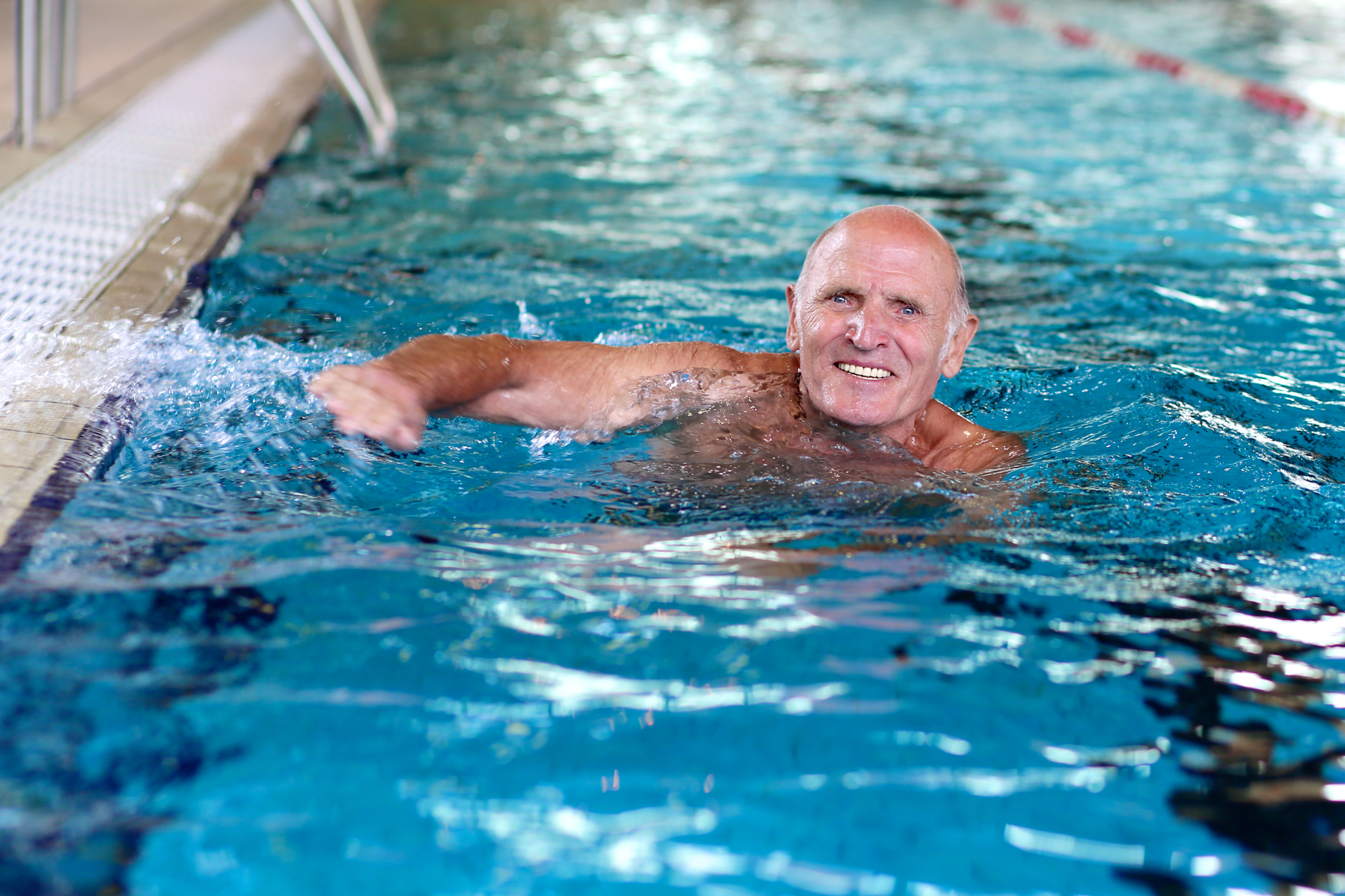

Here at Mangar Health, we spend a lot of time discussing what happens after an uninjured resident falls. We’ve written several posts on the matter, including the unspoken emotional impact for those that fall and the reasons why an elderly resident should never be left on the floor.
Rather than dealing with the aftermath of a fall, what if a resident could be prevented from falling in the first place?
There are many ways to help cut down the amount falls in the elderly, however, there is one method that isn’t talked about enough – keeping active in old age.
Why keeping active in old age is important
Maintaining a healthy exercise routine is important for anyone, however as you begin to age regular strength and balance exercises can help to reduce your risk of having a fall. Basically, exercise protects against loss in bone mass, reducing the risk of osteoporosis and lowering the risk of falling.
A study by the Journal of the American Geriatrics Society examined exercise in the elderly and found that training led to improvements in functional reach and balance, and reduced the participants’ fear of falling.
As well as helping to maintain a healthy body and lower the risk of falling in old age, physical activity can also lower the risk of serious health conditions such as dementia, Alzheimer’s, diabetes, obesity, heart disease, osteoporosis and colon cancer. It can also be a huge factor in the relief of arthritis pain.
If you’re looking to start an exercise routine please consult your doctor beforehand.
Getting Started
Research shows that it’s never too late to adopt a more active lifestyle, especially as older, active adults will reduce the risk of heart disease at a similar level as younger people who are active.
If you’re worried you have been inactive for a while, you can slowly build your activity up to reach the recommended levels.
If you’re already active you will find it more rewarding to either up your exercise levels over a week, or up the intensity.
Building a balanced exercise plan for you
In order to build and maintain a balanced exercise plan, it’s important to mix different types of physical activity. Not only will it help to keep your workouts interesting, but it will help improve your overall health and wellbeing.
The key is to find activities you enjoy that are based on the four ‘building blocks’ of fitness – balance, cardio, strength and power training and flexibility.
Balance
Balance exercises can help you to maintain stability, whether you’re stationary or moving around. It can help you improve your balance, posture and the quality of your walking which in turn reduces the risk of falling and fear of falls.
There are lots of balance exercises you can do but the best ones for those that are ageing are yoga, Tai Chi and posture exercises that are aimed to help those gain confidence with balance.
Cardio/Stamina
Cardio and stamina exercises use large muscle groups in rhythmic motions over a period of time. They get your heart pumping and may make you feel a little out of breath, but don’t worry this means they’re working. Designed to help lessen fatigue and breathing problems, they promote independence by improving endurance for daily activities such as walking, running errands, gardening and even cleaning the house.
To help build your stamina try cardio exercises such as walking, swimming, cycling, stair climbing, tennis, armchair aerobics and dancing. Anything that gets your heart pumping!
Strength and Power Training
Strength training helps to build muscle with repetitive motion, using weight or external resistance. Power training is essentially the above done at a faster speed to help increase power and reactions times. The thing that will be most important in old age is core strength, which can be strengthened by light activities such as yoga and pilates.
For advice on effective yoga poses for those of over 60, visit this helpful guide.
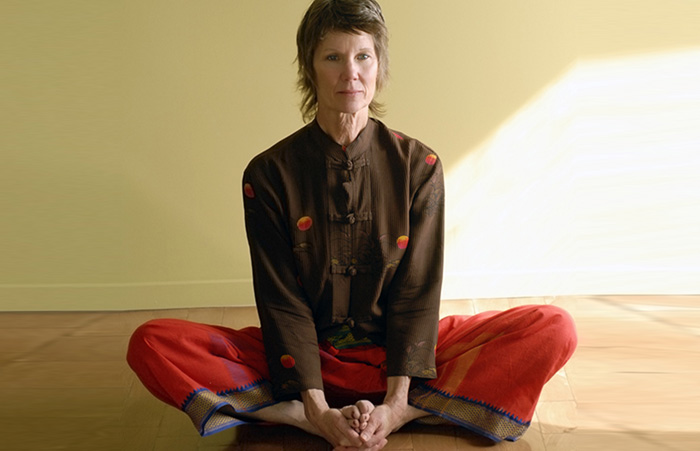
Both strength and power training are equally important for a number of different reasons. Firstly, strength training can help prevent loss of bone mass, builds muscle and helps up balance and reduces the risk of falls. Power training will also help to prevent falls as it enables you to react quickly if you start to lose balance.
Building this kind of strength will help you remain independent in your own home as it makes day-to-day activities easier such as opening a jar, lifting heavy objects or getting in and out of the bath.
Flexibility
Flexibility exercises challenge the ability of your joints to move freely. They help your body stay limber and increases your overall range of movement, making everyday activities such as looking behind while driving, tying your shoelaces and shampooing your hair much easier.
An improved range can be achieved by doing stationary stretches or stretches that involve movement to keep your muscles supple – so something similar to yoga or pilates would definitely help.
Although it would be impossible to stop falls in the elderly completely, a healthy exercise plan should not be overlooked as it can do the world of good when it comes to balance, strength and reaction times. Don’t forget it’s never too late to get started, so what are you waiting for?
#UpLiftingCare
The Top Five Calls All Care Home Workers Dread Making
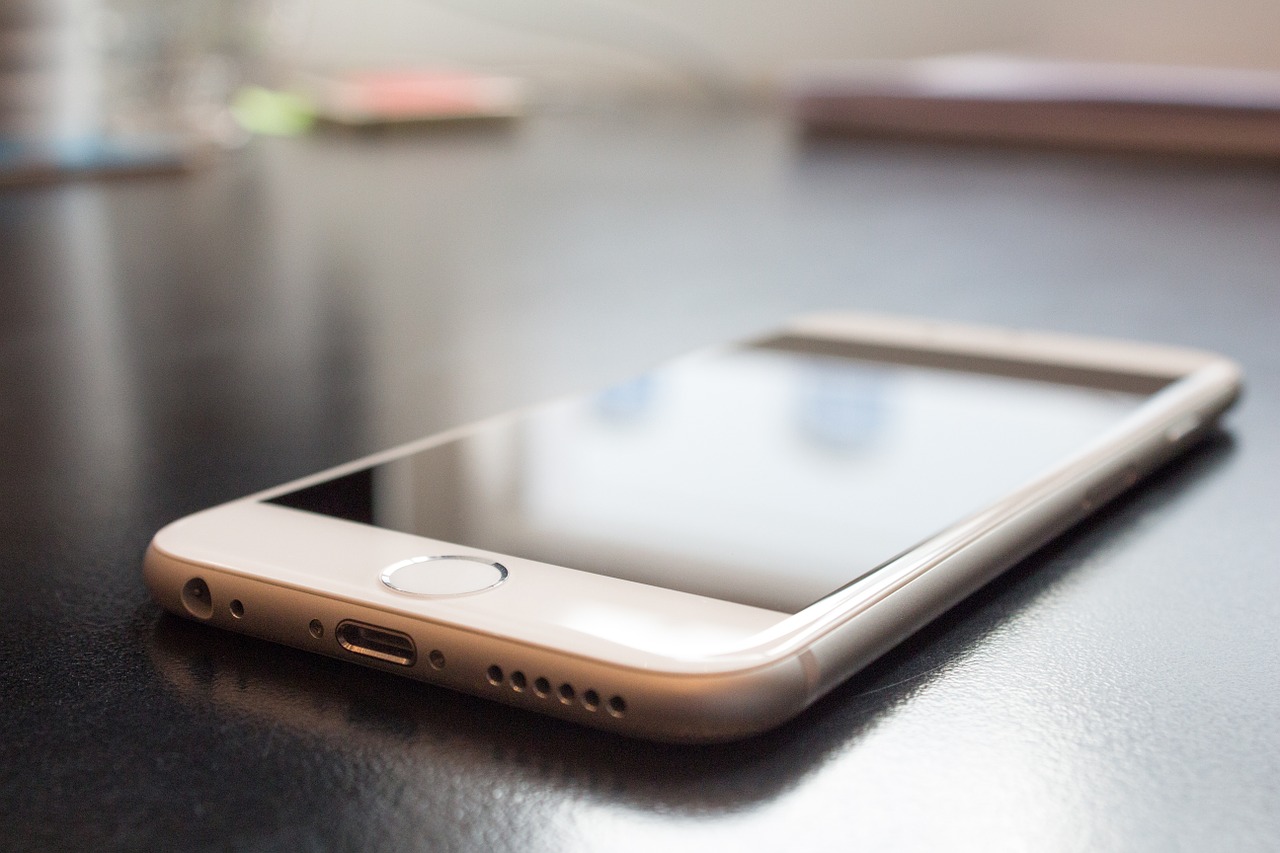
Here at Mangar Health we’ve nothing but respect for the thousands of dedicated individuals working across the globe in care homes, looking after their elderly residents.
Care home workers do an amazing job day in, day out but, like any job, that’s not to say that all aspects of it will be fun or easy.
As part of our #UpliftingCare campaign we reached out to our all followers on Facebook, Twitter and LinkedIn working in the care home industry to find out what were the best and worst parts of their jobs; the hardest to deal with and the most rewarding. We’ll be sharing all their responses over the next few weeks but below you can find the five phone calls most care home workers told us they dreaded having to make.
Your Loved One Has Fallen Ill
Breaking the news to someone that their loved one is ill will never be a nice call to make. Whilst it’s true that the majority of people in a care home will be there because they’re already either infirm or unwell; having to call a relative to tell them that their husband/wife/Mother/Grandfather has gotten worse is always unpleasant. The person on the other end of the phone will most likely be upset and worried. They’ll need comforting and reassuring that their loved one is being looked after whilst they’re unwell and it will be the responsibility of the person making the call to do that… and that’s a big responsibility!
Your Loved One Has Been Taken To The Hospital
Harder still is having to tell someone that their loved one had been rushed to the hospital. It doesn’t matter the reason, from something as minor as a sprained ankle to something a lot more serious, having to make that call is always going to cause someone upset and worry. No doubt they’ll be panicked and upset and it’ll be the care home worker’s duty to calm them down and let them know what to expect next.
Your Loved One Has Died
The call no one wants to make. In times like this ‘I’m sorry for your loss’ just seems so impersonal but what is the right thing to say? What can you say?
A good care assistant will, of course, have a lot of empathy for both the person that has passed and the person they’ve the sad task of informing but empathy, by its very definition, is the ability to share someone else’s emotions. That’s why this can be one of the hardest parts of the job.
Whilst telling someone their loved one has died, the care home worker will be sharing in a small part of that persons grief; even more so if they’ve been caring for the resident that’s passed for a while.
You’re Loved One Has Had A Fall
When compared to the previous point, having to tell someone that their loved one has fallen over might not seem so bad. However it can be a difficult phone call for a variety of reasons. With all the other calls we’ve mentioned, as upsetting as they are, they’re out of peoples control. When a fall occurs the person being called will most likely go into a semi panic; they’ll want to know how their loved one is, what’s happening, can they help and should they drop whatever they’re doing and come immediately. The care home worker’s job then becomes calming them down, reassuring them and explaining what will happen next.
You’re Loved One Is Still On The Floor
If you work in the care home industry you’ll already know what we’re talking about here. If you’re not then a quick bit of background may help:
When an elderly resident of a care home falls over and is uninjured there are several different things that can be done for them. A few care homes still have a manual lifting policy (although most care homes have stopped doing this now), a few will use one of our Camel’s or ELK’s to easily get them back on their feet but most will automatically dial 911 in line with their fall care procedures. The problem is, once the faller has been identified as uninjured they’ll be classed as a low priority for the ambulance service. This can mean waits of between one to four hours for the ambulance to arrive and get them back on their feet, all whilst the resident remains fallen on the floor.
Now imagine you have to make that call.
“Hello, is that Mr Smith? I’m afraid your Mother’s had a bit of a fall but don’t worry she’s ok.”
4 hours later…
“Hello, is that Mr Smith? No, I’m afraid your Mother’s still on the floor.”
Would you want to be the one to make that second call? Can you imagine the persons reaction or how the faller must feel? It’s not a nice part of the job at all and yet it can be so easily avoided. There are many, many ways to lift an uninjured faller which don’t involve calling out an ambulance . Our Camel and ELK emergency lifting cushions just being two of them.
If you’d like a demonstration on how one of our Camels or ELK emergency lifting devices could help improve the dignity of your care homes residents then feel free to arrange a demonstration or purchase one here.
Do you work in a care home? We’d love to hear from you below. What’s the worst call you’ve ever had to make?
#UpliftingCare
The Unspoken Emotional Impact Of Falling In Old Age
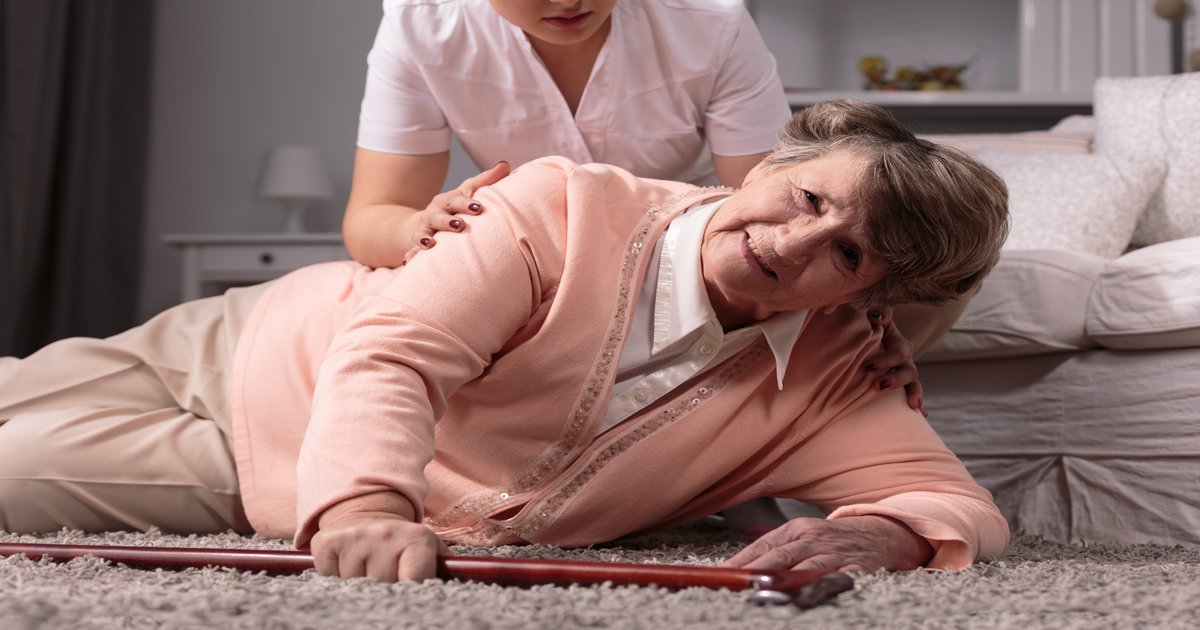
Elderly residents falling in care homes and hurting themselves gets discussed a lot within the care industry, the immediate physical harm a fall can have, the damage that can be done from being left on the floor for too long, the ongoing health implications after a fall and the best way to prevent or minimize falls happening again.
What gets discussed a lot less frequently however is the emotional and psychological impact falling can have on someone. Whilst, to a younger person, a fall may not seem like a big deal; many elderly people can and do have a very real fear of falling. A study from the WRVS (the Welsh Royal Volunteer Service) found that the fear of falling meant 225,000 people aged over 75 wouldn’t leave the house by themselves and interestingly it wasn’t the physical aspects of a fall that caused this behavior but the associated emotional and psychological repercussions of it.
Over one fifth (21% to be exact) of elderly people interviewed in the study who’d had a fall in the last five years had suffered with their confidence as a result, with 10% of people saying they were now a lot less independent. Even in people who hadn’t suffered a fall, the fear of falling was an issue, often exacerbated during periods of bad weather or the winter months, with a huge 52% of older people stating they felt much more vulnerable during winter and more likely to stay indoors.
Another study, conducted by Jane Liddle and Chris Gilleard from the Division of Geriatric Medicine at St George’s Medical School, London found that:
- 6% of people who’d suffered a fall were unable to get up by themselves for over an hour or more
- 62% of those who’d fallen had suffered some kind of injury, with 40% of those describing their injuries as moderate or extensive
- Sadly, more than 1 in 20 (7%) of the study sample they spoke to were concerned that no-one would even notice if they fell because they don’t see anyone for days on end.
- 23% of older people in the study said poor street conditions (poor lighting or poor pavements) made them feel less confident about leaving their home.
- And finally, the fear of falling was shown to have a direct correlation with increasing age. Over one in five (21%) of those aged 75-79 were worried about falling whilst this increased to over one in three (35%) of the over 85’s.
This isn’t just an issue that affects the elderly though; 58% of people interviewed who were caring for a loved one reported a ‘great fear’ that their friend/relative might fall again, compared to just 25% of those that were being cared for themselves.
It might seem hard to appreciate to anyone who’s never had a fall but the fear of falling, rather than the physical act itself, is an issue that has a huge negative impact on people in their old age. It leaves them feeling older than they actually are, helpless, hopeless, angry or frustrated and fearful of another fall. They worry about being forced to relocate to another home, about potential disabilities after a fall which might incapacitate them and leave them dependent on others, losing the ability to easily move around on their own and being confined to their home or having to rely on others, being in constant pain and losing the ability to easily accomplish tasks like bathing, getting dressed or even combing their hair.
Because of this many elderly people might try to hide the fact that a fall has occurred or downplay it when it does happen, however there are many signs to indicate a fall has taken place:
- Unexplained limping
- Holding their side or hip whilst their walking
- Facial signs of pain when they’re weight bearing
- Changes in their behavior or usual pattern of activity
- Reluctance to go outdoors unassisted or even at all
- Clutching others whilst walking
- Statements such as, “I’m afraid if I get up, I may not be the same.”
So what can be done about it?
Unfortunately, as people become older they do become frailer which can then, sometimes, lead to falls. Whilst the aging process can’t be prevented, what’s important is to maintain a person’s independence for as long as possible, enabling them to live at home, either alone or with a loved one with dignity.
The first thing to do is identify why falls might be taking place and take actions to reduce that risk including making a plan for getting help if they do.
Just taking this simple step will often allow people to feel a lot more in control of their life which will then engender a feeling of confidence and help reduce anxieties and worries. Talking to someone is a big part of this, whether it be a friend, loved one or health professional; the old adage a problem shared is a problem halved will never be truer. Falling and being unable to get back up unaided makes people feel very isolated, vulnerable and alone so just being able to discuss these worries and putting a plan in place to deal with them makes a lot of people feel better.
Whilst no one will ever be able to prevent all falls, it’s also very important not to let a fall set people back and knock their confidence. Setting small, achievable goals after a fall will help with this. Get them to walk a few steps before stopping and then a few more. Even if it’s just in the comfort of their own home this is a great confidence boost after a fall. Unfortunately many people after a fall stop most, if not all physical activity which then leads to feelings of isolation and depression and worse can even have a physical effect as they stop taking exercise and so lose muscle strength, making another fall much more likely. Helping people stay positive and active then is an important key in preventing further falls.
To help with that make sure anyone who’s been identified as at risk of falling has a falls plan in place. This will make the person feel a lot more secure and comfortable in their own home, which is key to their mental wellbeing. A fall plan typically include environmental and health risk factors, and what to do if a fall occurs when someone is alone, who they’ll contact and how that person would then get to them. The quicker you can get to someone who’s had a fall the better off they’ll be, for both their emotional and physical wellbeing. People that are left on the floor for long periods of time often suffer feelings of embarrassment, frustration, and distress whilst the physical aspect of the fall means that, even if they’re uninjured, being left on the floor for over an hour leads to higher mortality rates through complications such as pressure sores or dehydration.
Falls will always happen, unfortunately it’s a part of growing older but if people are encouraged and helped to manage it themselves for as long as possible then they’ll remain independent and active for a lot longer. This will then of course have a massive influence on their mental wellbeing keeping them active even longer and the more active someone is, the less likely they are to fall.
6 Reasons An Elderly Resident Should Never Be Left On The Floor
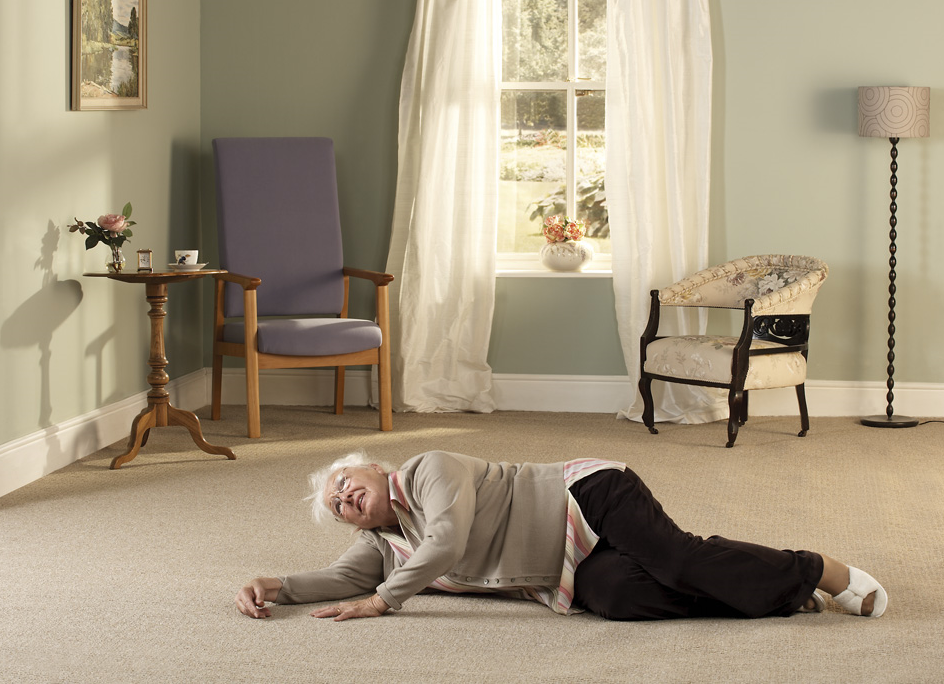
If you don’t support a loved one living at home or work in a healthcare environment, such as a care home or hospital where you interact regularly with people over the age of 65, then it’s unlikely you’ve had to consider what happens when someone has a fall.
It’s common to find that after a certain age many people will struggle to get back on their feet after a fall and may require assistance. Often, the first action carers will take is to call an ambulance for help and this is true for residents living in care homes too.
Now you may be thinking that that seems like a sensible precaution, however consider this…a third of people aged over 65 (a statistic which rises to 50% in people aged over 80) will fall at least once a year. Over 45% will be uninjured and do not require an ambulance or any hospital treatment.
20% of senior living community residents admitted to hospital after such a fall will have been on the floor for over an hour and perhaps most shocking is the statistic that of those, 50% will then die within six months from related complications, even if they were uninjured! Making the problem even worse is the fact that after you’ve fallen once, there’s a 60% chance of having another fall, which in a lot of people leads to loss of confidence and a reduction in activity which in turn leads to loss of muscle strength which then makes future falls even more likely, a self-fulfilling, vicious circle.
So why aren’t care homes lifting their residents?
Well there’s a variety of reasons.
- Staff may not have access to the right equipment
- They might not be fully trained in manual handling
- They may have been told to call 911 to protect the community from being sued if the resident is injured whilst being lifted.
- They may even genuinely believe calling 911 is the best thing to do for the fallen resident.
Whatever the reason, we’re sure everyone can agree that it’s not nice to be left on the floor for extended periods of time, no matter your age especially as there are a wide range of both physical and psychological implications to consider:
Pressure Sores/Pressure Ulcers
Pressure ulcers, also known as ‘pressure sores’ or ‘bedsores’ are an injury that breaks down the skin and underlying tissue when an area of skin is placed under increased pressure (sure as lying on the floor for long periods) and can form within half an hour of falling. The extra pressure causes a lack of blood to the affected region which causes it to become starved of oxygen and nutrients. Depending on the time spent on the floor, recumbent, in the same position, these sores can range from uncomfortable, to painful, right through to life threatening.
Incontinence
One of the more obvious and least dignified consequences of a resident being left on the floor for extended periods is incontinence which will come with a whole host of medical issues if the resident can’t easily be cleaned, not to mention the psychological embarrassment it causes people.
Again, ask yourself how you’d feel in that situation…
Dehydration
Whilst the risk of dehydration is greatly reduced in a care home it remains a fact that most people who do fall are at risk of suffering this if left for long periods. Being supine on the floor isn’t the most pleasant place to have a drink and many residents will prefer to wait till their back up on their feet; which can be a dangerously long time to go without any liquids at all.
Hypothermia
One of the more serious consequences of being left on the floor for long periods after a fall is hypothermia or the increased risk of contracting illnesses like pneumonia. In an ideal world a care homeresident would fall over in a warm, heavily carpeted room, however life is rarely that fair. A lot of falls take place in corridors or walkways with cold tiles underfoot or even outside. This obviously makes things a lot harder when trying to keep the resident warm during the long wait for an ambulance.
Psychological
Research by the American Journal of Epidemiology shows the fear of falling in the elderly will subsequently have a massive impact in reducing their ongoing quality of life. The fear of falling among older people occurs in approximately 30% of those who have never fallen and 60% for those who have fallen previously.
The person then becomes more dependent on others and less mobile and begins to cut their daily activities. As the fear of falling increases and activity diminishes, muscle strength weakens causing more and more falls.
In fact, frequent falls are often considered the main contributing reason for first admissions to a care home.
In addition, healthcare professionals who have been injured through manual handling tasks may also become reluctant to lift or move people going forward, becoming much more likely to call 911.
This can then directly impact the health of patients and increase the prevalence of pressure ulcers and other associated issues.
Death
Finally, 20% of people over 65 admitted to hospital as a result of a fall have been on the ground for over an hour. 50% of these will die within six months as found in the study by Vellas et al.
So, what can be done about this? Clearly the easiest answer is to empower care homes to lift fallen residents safely and only call ambulances in emergency cases. Unnecessarily admitting residents to hospital impacts services dramatically.
Now clearly we here at Mangar Health feel the right equipment to use would be our Camel or ELK lifting devices. They’re safe, dignified and are perfectly suited to single handed care however, we’d also be more than happy if care homes were using any other suitable lifting devices as well. We understand they’re committed to providing quality, dignified care for their residents but we’d like to see less pressure on an the already overstretched emergency services.
Did you know that every ambulance in the UK carries one of our ELK lifting cushions and when a paramedic arrives at a care home in the UK they are likely to use the ELK to perform the lift; all we’re suggesting is that care homes reconsider their falls policies and create care pathways that best protect the health of their residents.
#UpLiftingCare
A Proper ‘Cuppa’ Proven To Reduce Dementia Rates by 50%
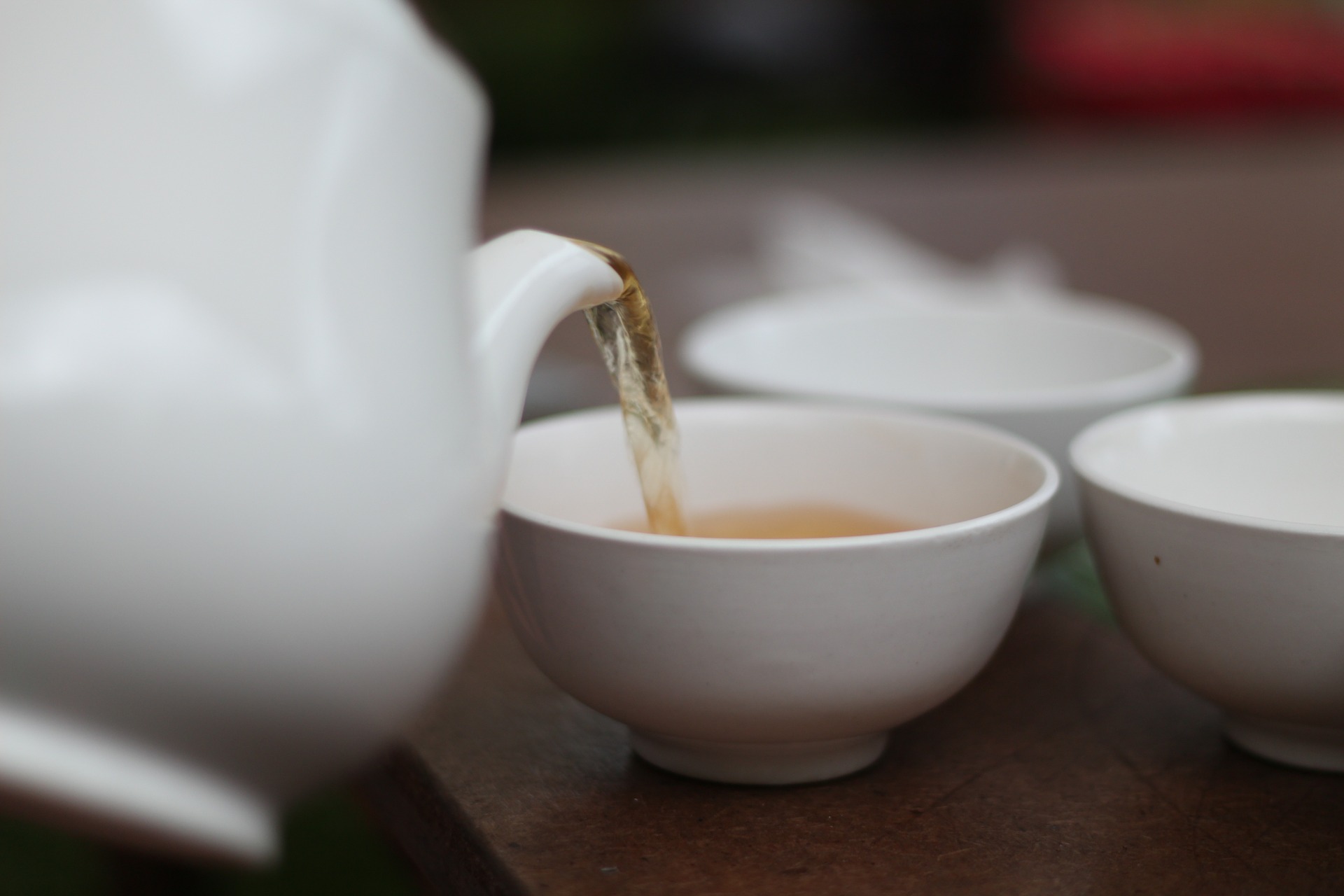
Could staving off dementia in old age really be that simple?
Recent research has revealed that the simple act of drinking a daily cup of black, green or oolong tea could reduce the risk of cognitive impairment in old age by as much as 86%
In case you’re thinking it sounds too good to be true there’s hard science to back that assertion up. A recent study by the National University of Singapore, led by Assistant Professor Feng Lei and his team, monitored 957 (aged over 55) Chinese people’s tea consumption habits over a two year period and determined that the drinking of black, green or oolong tea massively reduced the onset of dementia.
The study, published in the Journal of Nutrition, Health and Ageing, found that those drinking tea every day reduced their rate of ‘cognitive impairment’ by 50% but, for those who were genetically predisposed to Alzheimer’s it reduced the risk by up to 86%
When asked, Assistant Professor Feng Lei commented to say
‘The data from our study suggests that a simple and inexpensive lifestyle measure such as daily tea drinking can reduce a person’s risk of developing neurocognitive disorders in late life’.
Whilst the research was focused on tea brewed fresh from leaves (such as black, green or oolong), most varieties of tea contain catechins, theaflavins, thearubigins and L-theanine; compounds all long proven to contain anti-inflammatory, antioxidant and bioative powers.
The popularity in green tea has already risen recently after it was proven to be a benefit in healthy diets and even aid weight loss by introducing something called polyphenol to your system, which helps speed up the metabolism which in turn allows your body to burn off more of the calories from the food you eat.
It should be noted Assistant Professor Feng Lei did say more research was needed to understand exactly why tea helps heal the brain however until then it’s probably a good idea to follow the people in his study’s example and get the kettle on.
You Only Die Once – 14 Things You MUST Do To Prepare For Old Age
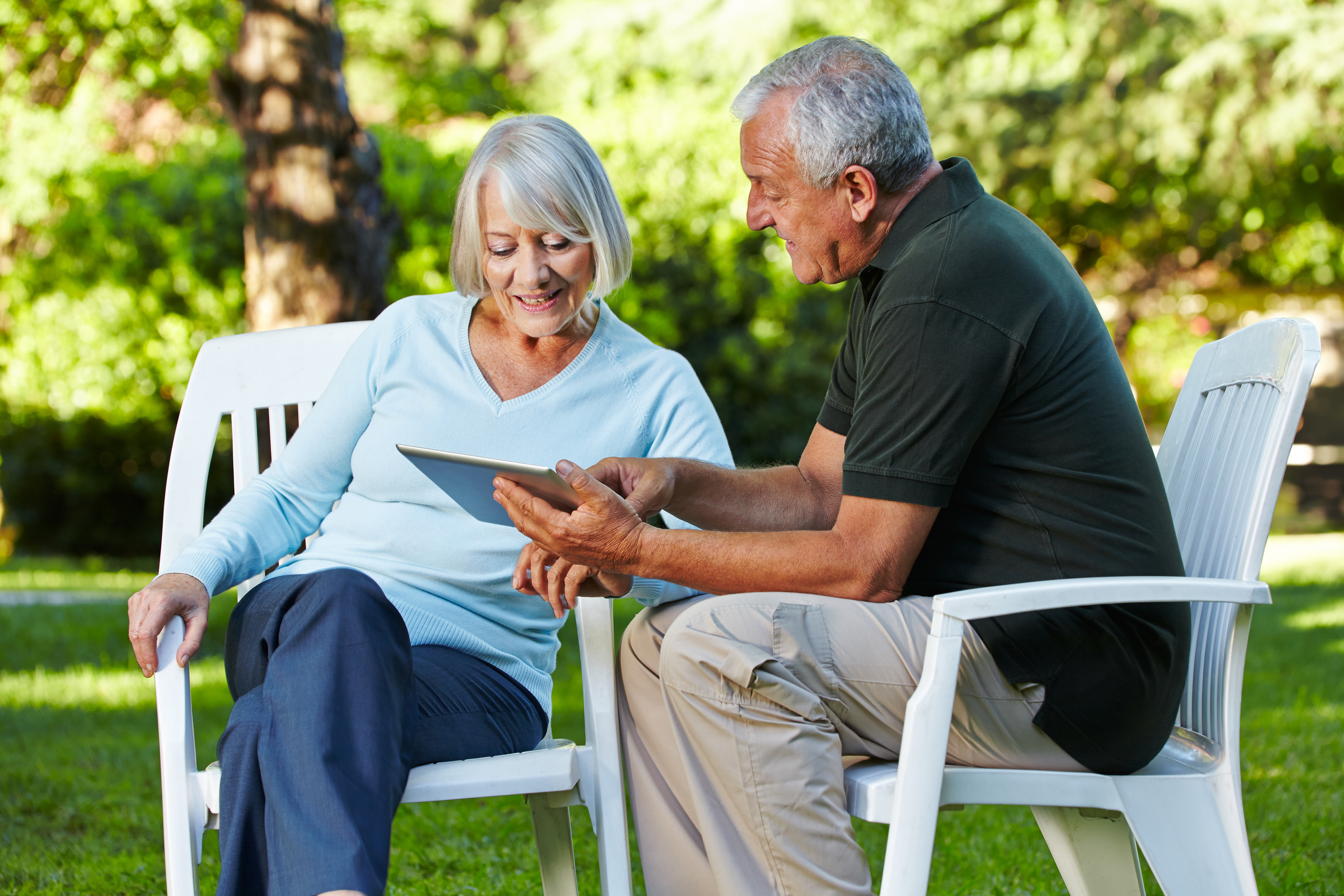
Old age.
It’s one of the last taboo subjects of modern society. Everyone’s aware of it, everyone knows it will happen one day but even now it’s still one of those topics that dare not mention its name.
And yet, barring a tragic accident, all of us will one day become old.
Each and everyone one of us.
Which unfortunately means it’s no good burying your head in the sand, pretending it’s not going to happen to you or someone you love or even just hoping it’ll all work out in the end. The time was that attitude might (might) have been OK but over the next twenty years the number of 85 year old’s is going to increase exponentially.
When asked Sally Greengross, chief executive of the International Longevity Centre, says, “Things have changed enormously because the population has changed – there are many more older people than there were. Part of the trend now is to live longer but one in three of us is going to get some form of dementia.
All that means that going forwards the onus is very much going to be on you to make sure you’re looked after in your old age.
Now that may seem like a fairly grim picture that’s being painted and it’s easy to see why so many people choose to stick their fingers in their ears and make ‘la la la’ sounds rather than think about it but it doesn’t have to be all doom and gloom. There are many steps you can take at every stage of life to help with the situation and make your old age a lot more comfortable for both yourself and your life partner…
Be organised
It’s not nice to think about but one day a loved one may have to come in and make decisions about your care for you. Try to make things easy for them by being organised. Make sure all your financial documents and plans are in one place. With them keep a clear list of everything coming in and out of your household finances, any savings or investments you have, any properties you own and any debts you might have. Knowing exactly what your finances are will be invaluable in sorting your care for you.
Make a will
If the worst happens and you die without making a will (called dying intestate) then the law gets to specify how your money will be divided. That means your assets might not necessarily go to those you want them to after you’re gone. If you want to stay in control and decide who gets what then a will is a must. Whilst it’s possible to draw one up yourself, even a tiny, technical mistake can invalidate it so it’s always a clever idea to get it done professionally, however it’s worth noting any will you draw up now might be invalid if you marry/re-marry so make sure you keep it up to date by checking it every five years or so and possibly redrafting it.
Have a What If… meeting
Just because you’ve decided to tackle your old age head on it doesn’t mean your family will be happy to; they may think you’re being morbid or worrying about nothing but it is important you have a what if… conversation with your nearest and dearest letting them know exactly what your wishes would be if you became incapacitated or died.
Make a living will
Holding a What If… meeting with your family segues nicely into the next point; living wills.
A living will is a document in which you express how you’d want to be treated in different situations in case the time comes when you can’t make your desires known.
Organise your power of attorney
If you think you might one day need someone to hold power of attorney (or it’s equivalent’s) for you then you should set it up well in advance of when you might need it as you won’t be able to if you’re deemed not to have ‘sufficient mental capacity’ (the legal ability to make decisions for yourself). Power of attorney doesn’t have to be expensive to set up but if a loved one is forced to handle your financial affairs without it it will be an even more expensive and complicated process for them.
Set a pension up now!
A lot of people resent paying into a scheme for over forty years before they see any benefit from it, particularly with the bad press some pension companies have had recently but it’s important for you to set up a private pension.
Most financial experts state to maintain your standard of living after retirement you’ll need at least 70% of your pre-retirement salary; a figure which rises to 90% for those from lower earning households. With that in mind it’s important to start paying in to a private pension as early as possible and where possible keep a separate savings account for after your retirement that you pay into regularly and that earns as much interest as possible for you.
Pay off all your debts before you retire
It may sound like an obvious point but after retirement, unless you’re super prepared, your ability to pay off debts will be vastly reduced compared to when you were working. With that in mind make sure you clear as many as possible whilst you can. They can also cause problems down the line if you’re trying to get into a care home but debt collection agencies are chasing you for your assets.
Plan a budget
A good idea when considering the financial implications of retiring is to make a retirement budget. What do you plan to be doing? Will you be taking up any new hobbies? How expensive are they likely to be on a monthly basis? Do you have a bucket list you want to work through? Calculating how much you’ll need on a monthly and annual basis for retirement will make a multitude of other decisions you must make easier.
Keep working
While retirement ages are always a hot topic for older voters there’s nothing to say you have to retire at the age of 60 or 65; in fact that decision could be completely wrong for you.
Obviously the main question you need to consider is if you can afford to retire but there are many other factors to consider before you make that choice, not the least of which being are you mentally prepared to retire? While the thought of not having to get up for work every morning is enticing, it can leave some people angry or depressed with literally no reason to get up in the morning. When planning for retirement make sure you’ve thought about how you’ll fill your days. Will you be taking up a hobby? That’s great, but ask yourself; does it have to wait till you retire?
Sure you’ll have extra time to spend on it but why put it off? Why not start your plans now, staying physically and mentally active have many benefits, as you’ll see in the next few paragraphs.
Stay healthy
Whilst the majority of the advice discussed so far has centered around your finances, they’re by no means the only thing you need to consider. Looking after yourself by losing weight, quitting smoking, only drinking in moderation and generally staying active will not only mean you live longer to enjoy all your financial planning, you’ll also increase the amount of time you can remain independent and able.
Plan for your needs…before they become necessary
The last thing you need in your old age is stress. Try to envision the kind of needs you might have and deal with them whilst it’s still easy to do so. Are you still in the family home you’ve been in for the last 20/30 years? Do you still need three bedrooms?
A smaller house and garden will be much easier to manage as you get older.
Should you consider moving closer to family to form an extended support network?
Is there anything you can do to the home itself that might make it more navigable as you get older?
All these things are well worth considering as you reach retirement age.
Make friends
That might come across as a bit of a facetious statement but it’s surprising how many peoples extended social networks resolve around either family or work or both. As you get older work friends may drift as you lose touch with them on a day to day basis and family might move away or pass on themselves. If you don’t have a wide network of friends you could be setting yourself up for isolation in your old age. Try to take stock of who you know and who you can stay in touch with easily after you retire and extend your range of social activities to widen your social circle(s).
Stay mentally active
It’s not just your physical health you need to look after either. Keeping mentally alert has a range of proven benefits from staving off depression to delaying/slowing down the onset of dementia.
You can’t control everything
Finally, you can’t control everything. People get old; it’s an inalienable fact of life and will happen to you. Plan for what you can and then just relax and enjoy your senior years; after all you’ve earnt it!
You May Also Be Interested In…
The Cost of Bed Blocking to the NHS
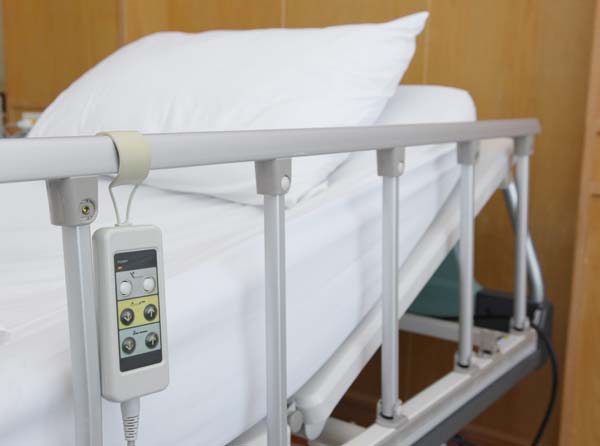
Delayed discharge or ‘bed blocking’ is currently causing a huge strain on the NHS, with millions of hospital beds being blocked each year by elderly patients that are well enough to be discharged, but may not have the correct support or equipment in place at home to do so.
Bed Blocking Rises
Statistics from the Department of Health show that each day there are more than 8,500 elderly patients being treated by the NHS that have been on hospital wards for weeks, even though they may be well enough to be looked after at home should they have the right support. In June 2016 alone 115,425 bed days were lost due to delayed discharges, a figure that is just under 80% more than the same period five years ago.

Experts behind the NHS bed blocking studies have forecast a 24% rise in the number of delayed transfer of care beds between now and 2021, with the possibility of costing the NHS up to £3.3billion in total.
The Implications of Bed Blocking
The rising number of delayed hospital discharges is affecting the NHS in numerous different ways, including increasing pressure on A&E departments, increased trolley wait times, and an increased number of cancelled operations.
Pressure on A&E Departments
Hospitals handle more than 1.8million A&E attendances each month, with an average of 460,000 of these being classed as emergency admissions.
Saffron Cordery, director of policy and strategy at NHS Providers details how the rise in A&E admissions is affecting the bed blocking crisis by saying “we’re caught in a relentless cycle of record high A&E attendances, increasing emergency admissions and greater numbers of patients who cannot be discharged because the services they need in the community have not been properly resourced yet.”
Trolley Waits
Figures show that whilst Britain’s elderly population continues to increase, the number of people receiving state care outside of hospitals is falling, putting a huge burden on NHS A&E departments where there are limited beds available.
Newly arrived patients that require a bed are left waiting on trolleys in hospital corridors, with the number of people waiting between four and twelve hours for a bed, almost tripling since 2013.
Cancelled Operations
As a result of the daily delayed discharge of over 8,500 patients, the rise of cancelled operations could be directly linked to the lack of beds available. In efforts to help tackle the bed blocking crisis, nearly 100,000 operations were cancelled on the day during 2015 (Patient’s Association).
Other implications of the escalating figures include an increased delay in assessments, poor cross-departmental communication and the ineffective allocation of nursing home placements. This shows that not only does the situation negatively impact patients, but it has the potential to cost the NHS a considerable amount each day.
The Cost of Bed Blocking to the NHS
If you take into account the 8,500 beds that are being blocked each day and the costs of staff, it is estimated that delayed discharge is currently costing the NHS £900 million a year.
It is, however, thought that this cost could be a lot higher.
A report carried out by Labour peer, Lord Carter, shows the growing trend to pay private hospitals to do NHS work, as well as the growing waiting times in A&E, could also contribute to the overall cost of bed blocking.

Bed Blocking Solutions
Reduce the number of people coming to A&E from ambulance call outs
Each year there are more than 6.6million ambulance call outs in the UK, 700,000 of which are for falls. Out of those, it is estimated that 45% of people are uninjured and do not need transferring to a hospital.
With that in mind, it is better to provide care and support to patients in care homes or their own home, rather than admit them to a hospital for an assessment. Patient lifting devices like the Mangar ELK and Camel Lifting Cushions can be used to safely lift someone that has fallen, without them having to be admitted to an A&E department.
Make the most of specialist care environments
One solution that is often discussed when it comes to bed blocking is that people who require continuous care may not necessarily need hospital-based care and may need a specialist care environment or care home instead. Although they may not be well enough to stay in their own home without assistance, there are a lot of patients who would benefit more from being in an environment where they can receive a more tailored method of care.
Have a supply of equipment in place to help aid those that can be discharged
One of the key issues with bed blocking is that there are not enough measures in place to ensure people that are ready to be discharged have the right equipment waiting for them at home. This could be anything from falls prevention to pressure care management.
If you would like more information on how Mangar Health could help support hospitals and care homes with the bed blocking crisis then please contact us on 0800 2800 485 or email sales@mangar.co.uk.
Challenging the Ageing Process
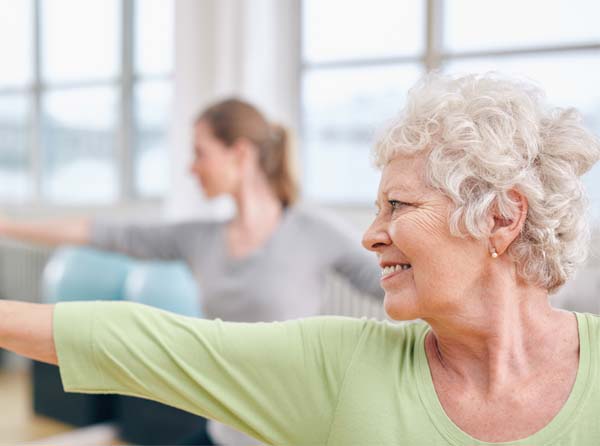
The Ageing Process
Getting older is a natural part of life and is a gradual and continuous process of change, as many bodily functions begin to gradually decline. The process usually begins in early adulthood and has been known to start as early as your twenties.
With that in mind, people don’t become old or elderly at any specific age. Instead, age is categorised in three different ways:
Chronologic Age: Chronologic age is based on the passage of time, as it is a person’s age in years and has limited significance in terms of health. As chronologic age helps to predict health problems it is often used in legal and financial cases.
Biological Age: Biological age refers to the different changes that commonly happen as someone gets older. As biological age takes into consideration lifestyle, habit and subtle effects of disease it can happen sooner in some people than others.
Psychologic Age: The well known saying “you’re only as old as you feel” can be applied here as psychologic age, is solely based on how a person acts and feels. This means a 75-year-old who works, takes part in activities and looks forward to future events could be considered to be psychologically young.

Normal Ageing
As your body starts to age there are some gradual changes you can expect to happen at your body’s own pace. This could depend on your family’s pattern of ageing as well as your lifestyle choices, which usually have a more powerful impact on how well your body will age.
Not everyone will experience the following changes when going through the ageing process, and a healthy lifestyle could definitely help to slow them down.
Vision
Vision is known to be one of the first things to decline as you begin to age, as several things can occur:
- The lens stiffens, making it harder to focus on objects nearby
- The lens becomes denser, making it hard to see in dim lighting
- It takes the pupil longer to react to changes in light
- The way colours are perceived changes as the lens yellows
- The number of nerve cells decreases, impairing depth perception
- Less fluid is produced so eyes begin to feel dry
Hearing
Hearing loss could develop suddenly, however, when it gradually starts to decline it can be considered another ‘normal’ aspect of ageing. Although exposure to noise over time can damage the ear’s ability to hear, some changes in hearing can occur as people age regardless of their exposure to loud noise.
General signs and symptoms of hearing loss could include:
- Difficulty hearing other people clearly or misunderstanding what people say
- Repeatedly having to ask people to repeat themselves
- Having to listen to the television or radio with the volume turned up higher than what people require
- Difficulty hearing the telephone or doorbell
- Regularly feeling tired or stressed from having to concentrate while listening
Skin
Skin can change in many different ways as you age depending on your lifestyle, diet, family history and any other personal habits. The ways in which skin could change with ageing include:
- Skin becomes rougher
- Skin becomes loose with the loss of elastic tissue
- Skin becomes more transparent due to the thinning of the epidermis
- Skin becomes more fragile
- Skin is easier to bruise as blood vessel walls start to thin
Hair and Nails
With age, it is normal for hair to gradually thin on the scalp and as hair pigment cells decline in number, grey hair growth will increase. This is considered to be one of the clearer signs of ageing and can start as early as your 20’s.
During the ageing process nails are most likely to become thick, hard, brittle, develop ridges or start to yellow in colour. Although changes in nails could mean there is an underlying problem, most of these changes are commonly put down to age.
Height
By the time someone turns 80 it is common for them to have lost as much as 2 inches in height as a result of changes in posture and compression of joints, spinal bones and spinal discs; even the gradual flattening of foot arches could contribute!
Sleep
Sleeping patterns naturally change as you get older as adults may experience the following:
- Sleeping for fewer hours and taking longer to fall asleep
- Sleeping less deeply and waking up more often during the night
- Having more trouble adjusting to changes in sleeping conditions, such as a different bed or surroundings
Bones
The skeleton provides support and structure to the body, however, as the body ages changes in posture and gait are common. There are many ways in which bones can change as they age, with some of the common ways including:
- They lose mass and density, especially in women after menopause
- The spine becomes shorter as the disks gradually lose fluid and become thinner
- Vertebrae lose some of their mineral content, causing bones to become thinner
- Foot arches become less pronounced
- Bones in the arms and legs become more brittle due to mineral loss, but they do not change length
- Joints become stiffer and less flexible, or they begin to lose cartilage
Metabolism
Over time, your body will typically need less energy, and so your metabolism will slow down. Hormone changes in the ageing body cause a shift, building more body fat instead of muscle mass.
Heart
As a normal stage of ageing, the heart will become naturally less efficient, meaning it will have to work a lot harder during activity than it did in the past. As a result, you’ll be able to notice a gradual decline in your overall energy and endurance from one decade to the next.
Lungs
Similar to the heart, lungs will start to become less efficient and supply your body with less oxygen as your body ages.
Brain and Nervous System
Starting in your 30’s your brain’s weight, size and its blood flow will all start to decrease. Memory changes are a normal part of the ageing process and it’s common that with your brain’s capacity decreasing you will have less recall of recent memories.

Challenging the Ageing Process
Physical Activity
It’s no secret that physical activity brings physical vitality, with each year of your life giving you more to gain from being physically active. Having an active lifestyle has been proven to improve your energy levels, mental sharpness, mood and balance. It is also considered a great aid for managing chronic illnesses and diseases including osteoporosis, osteoarthritis and obesity.
If you have been inactive for a while it’s important not to set your goals too high and start by aiming to move more each day. From there, you can build up to doing more and more to become physically active. It is advised, however, to see your doctor for a full physical examination before you start as they will be able to recommend the best forms of exercises to help you reach your goals.
Nutrition
Good nutrition plays an increasingly important role in the ageing process as it can make you feel better, sharpen your mind and help you live longer and stronger.
It has been proven that eating a low-salt and low-fat diet with plenty of fruit and vegetables can also help to reduce age-related risks of heart disease, diabetes or other chronic diseases. To get everything your body needs in order to age well you need to drink plenty of water each day and eat a mix of proteins, carbohydrates and fats.
If you need any help with your diet and how to accommodate your daily intake to your energy levels you can speak to the NHS about seeing a registered dietitian.
Remaining Independent
Challenging the ageing process and remaining independent for as long as possible is something everyone wants to be able to do, with 82% of people saying they would prefer to stay in their own homes as they age.
Although many people are not able to remain safely in their own home – assisted living aids, adaptations and OT support can allow a large proportion of people to remain independent for as long as they possibly can. Common assisted living aids could include:
- Bathing aids – grab rails, non-slip mats, bathing cushions and shower seats
- Dressing – orthopaedic shoes, long-handled devices to help with buttons and specialist clothing with Velcro fastenings
- Bedroom aids – Pillow lifts, Leglifters and pressure relief
- Furniture – Beds, chairs and bath stools
- Kitchen aids – Easy to use tin openers and utensils, kettle tippers, non-slip mats and chopping boards
- Mobility aids – Walking sticks and frames, wheelchairs, lifting cushions and scooters
- Safety – Personal alarms, grab rails, grabbers, safe patient lifting devices and reachers
- Daily living – telephones with large displays, clocks and watches and medication management
For more information on the ways in which Mangar Health could help you stay independent in your own home, please get in touch.
Training at University Hospital of Wales, Cardiff
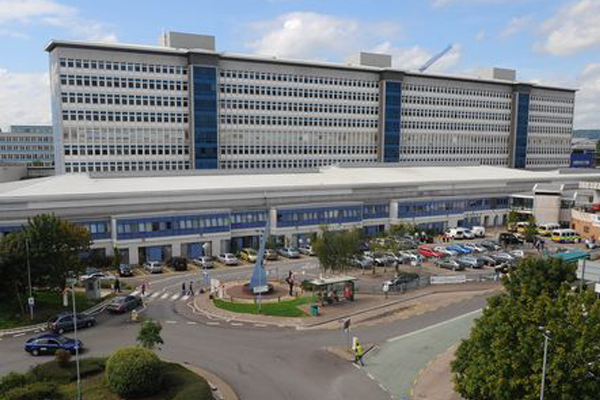
At the end of last year, one of our Sales Administrators, Rena, visited Cardiff University Hospital of Wales with Area Representative, John Finister. The internal sales team had been given the opportunity for one of them to attend a two-day student demonstration, so Rena jumped at the chance to experience a training session first hand.
As University Hospital of Wales is one of the top three schools in the UK for Occupational Therapists, Mangar Health organise a yearly demonstration of our key products to help raise awareness with students in their second year of study.
The students that take part in the training session have already carried out several placements in care homes and hospitals so they have a good understanding of the situations in which Mangar products could be used. With that in mind, the purpose of the demonstration and training was to show the value our products can have in those instances.
With over 70 students taking part the training events were split across two days and into two different 90 minute long sessions on each day – one on safe patient lifting and another on our bathing and bedroom products.
Bedroom and Bathing Training Sessions
The first session was made up of the Leglifter, Bathing Cushion and Archimedes, where John and Rena split the group in half. Rena lead the bathing half of the session, showing the students that everyday tasks such as bathing needn’t be difficult when you start to lose your mobility. At the same time John lead the bedroom session on the Leglifter. Although the Sit-U-Up and Handy Pillowlift were not on display the students were also given a brief introduction to them in this session.
Rena pointed out that “the students in my session were able to try the products out for themselves and although they were worried about sitting on the bathing cushion at first, they were amazed at the support it was able to provide to someone that may not be able to get into the bath themselves. Seeing the live reactions as they were using the bathing cushion was incredible and I felt proud that I was showing the future generation of OTs some life changing equipment that can really make a difference to someone’s life, whether they remain in their own home or go into care.”
Safe Patient Lifting Training Sessions
After the first session the two groups joined together for a presentation on the Camel and ELK lifting cushions, followed by the chance try them out themselves.
Rena said that “although they were apprehensive and a little nervous to lie on the floor, the end result was almost disbelief that they were able to be picked up at the touch of a button. It was great to be able to see the moment on their face where they realised the true value of the lifting cushions.”
“I really enjoyed the whole experience as I was able to benefit from talking to our future OTs. We found out what interested them about Occupational Therapy and why they wanted a career in it, which was really interesting when everyone had a different answer. “
“It was a pleasure working with John on these sessions and I went back to the office and urged everyone to take part so they could see people’s reactions first-hand. The students were receptive and chatty, which made the whole experience worthwhile for me.”
If you would like more information about our Product Awareness Events or training sessions please get in touch with the Mangar Health sales team (sales@mangar.co.uk).
Mangar Health at Arab Health 2017

At the end of January, Mangar Health will be attending Arab Health 2017, the largest gathering of healthcare and trade professionals in the MENA region. From 30th January until the 2nd of February you can visit the Mangar Health stand in the Welsh Pavilion (Hall Z1 Stand G30) at the Dubai International Convention and Exhibition Centre.

Arab Health gives visitors the chance to explore 4,400 of the world’s leading healthcare companies, from over 70 different countries at 38 different dedicated pavilions. Alongside the exhibition, there are also a number of unique programmes taking place. These will aim to give practitioners first-hand experience with the latest technological healthcare advancements from companies exhibiting at the show.
The stand will have both the Camel and ELK on display, where our International Business Development Director, Nigel Wood, will be there with Area Representative, Paul Brittain, demonstrating the products and answering any questions you may have about our safe patient lifting devices.
To register for your free ticket, visit the Arab Health website here. If you’d like to arrange an appointment prior to the event please email Nigel Wood (nwood@mangar.co.uk).
Living at Home with Dementia
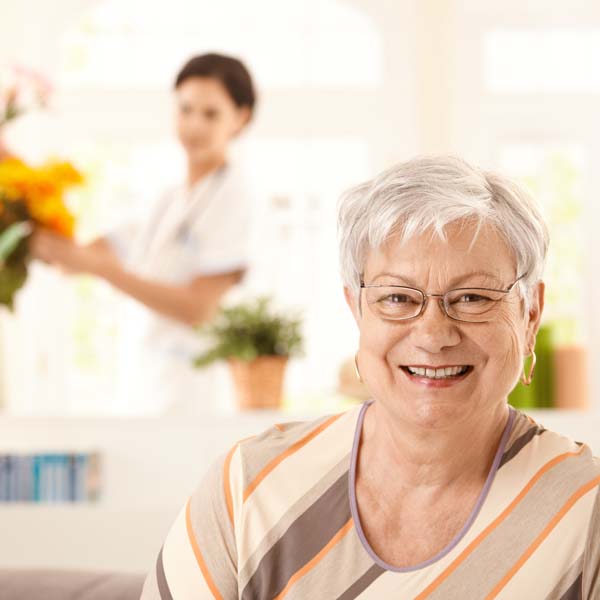
As being diagnosed with dementia can have a huge impact on a person’s life, the longer they are able to stay in their own home the safer and more independent they will feel.
Research shows that there are currently over 525,000 people in the UK living at home with dementia, representing a significant proportion of the 850,000 people thought to be living with the disease overall.
Living at Home with Dementia and Paying Council Tax
Council Tax is a complicated and ever-changing system, with the amount payable dependent on a number of different things. This includes the rate of tax set by the Local Authority, the overall value of the home and whether or not the people paying are eligible for any discounts or reductions.
Some people, including those classed as severely mentally impaired, can be completely exempt from paying any Council Tax. This could include:
- Those that have a permanent, severe impairment of intelligence and social functioning.
- Those that have a certificate confirming their impairment from a registered medical practitioner.
- Those that are entitled to certain disability benefits including Attendance allowance, Disability Living allowance and the new Personal Independence payment system.
Most people living with dementia will meet all three of the above criteria, making them exempt under the severe mental impairment rules. Similarly, if there is a couple living together and one of them has dementia, they will only need to pay a single rate.
Living Alone
Most people living with dementia will want to stay as independent as possible and will continue to live alone in their own home for some time.
As their condition progresses they may find that they need extra support to help them cope in their own home and it’s better to get this in place early. Those looking for extra help and guidance are encouraged to talk to friends, family and health professionals about how they can help them stay independent in their own home.
Professionals and Occupational Therapists will be able to advise on how to cope with daily practical tasks such as cleaning, shopping and bathing. They can also give access to support services that help with home management, including supervising meals or carrying out daily cleaning tasks.
For more information on the types of help and support someone living with dementia can receive, visit the NHS website.

Dementia and Falls at Home
In the early stages of dementia, many people are able to look after themselves in their own homes in the same way as before their diagnosis. However, as their dementia worsens their home may need to be adapted to enable them to stay safe, mobile and independent.
Each year 3.4m elderly people are treated for a fall that can cause serious injury, costing the NHS and social care industry an estimated £6m a day when combined. On top of that there are around 700,000 unnecessary Ambulance call outs for falls per year, costing the emergency services on average £300 each time.
Research shows that of the 3.4m people being treated for a fall, 12,000 of them are admitted to hospital for falls when trying to get out of their chair. The impact of this can be extremely detrimental to someone living at home with dementia, affecting them mentally and physically in the following ways:
- They could suffer from an injury i.e. broken bones, bruising or an open wound.
- Repeat sliding or falling while getting out of a chair could result in pressure ulcers.
- Injuries from falls could affect the rehabilitation of a patient and increase the amount of time spent on bed rest.
- When a patient experiences a fall it can really damage their confidence and they will be less likely to move as much. This could mean they become more immobile and depend on others for assistance and help.
- If someone at home requires a healthcare assistant to help them stand up from a chair or to help reposition them to prevent them from sliding down their chair, it means there is an increase in staff time and the overall costs to the NHS.
While living at home with dementia there are a number of factors to be considered when trying to prevent falling while standing up from a chair. These include:
- Shuffle to the edge of the chair and place both feet firmly on the floor.
- Grasp the armrests or put both hands on your thighs and slowly push yourself up.
- Use lifting devices to help aid you when standing up, such as the Raiser Lifting Cushion.
The Raiser Lifting Cushion
The Raiser is an innovative assisted living aid, perfect for those living at home that may struggle to get up when seated, as it allows people to safely lift themselves out of a chair in a dignified way. This method is considered a great alternative to a riser recliner, especially as the Raiser is designed to easily fit the shape of any standard household armchair.
Safe Patient Lifting
For those living at home with dementia that have a high propensity to fall, it is important that they have the equipment in place to be lifted safely and with dignity. Someone living with dementia may find it distressing to be lifted off the floor after they have fallen, especially if it is a friend or relative who may not be medically trained.
The Camel Lifting Cushion is a dementia-friendly aid that is ideal for a home setting as it is suitable for those not professionally medically trained. Its size means it is suitable for lifting someone who may tend to move around during a lift, making it a dignified and safe choice for those living with dementia.
If you would like more information about aids designed to support those living at home with dementia please do not hesitate to contact us.



